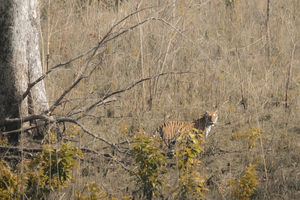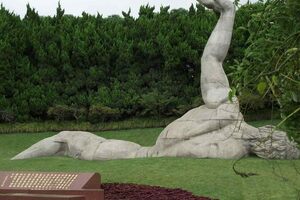Bardia National Park in Nepal

A little more than 60 Royal Bengal tigers roam Bardia National Park, around one-fourth the total tiger population in Nepal. Together with the adjacent Banke National Park, Bardia forms part of the 860 square mile Tiger Conservation Unit, where visitors have a sporting chance of seeing the usually elusive great cats in the wild.
Because it’s more remote than the better known Chitwan National Park, few people visit the less developed Bardia, allowing flora and fauna to flourish. Tigers and one-horned rhinos are especially abundant here, but more than 50 other mammals call Bardia home. These include the Gangetic river dolphin, swamp deer, and wild elephants.
Additionally, the park is a birder’s paradise with more than 400 species having been recorded within the park. Mugger crocodiles, and their pointy-nosed cousins the gharial, also lurk in the Babai River where their critically endangered population is starting to recover.
The park began as a royal hunting ground and was later transformed into a larger reserve. It was named a national park in 1988. To create the reserve, over 1,500 households were moved to establish the nearly 250,000-acre park, but despite this, the region is culturally rich.
In particular, the indigenous Dangaura Tharu people occupy the surrounding area around Nepal’s Terai region. With such a vibrant natural setting, it’s no surprise that the Tharu are animists whose generations of isolation led to a culture and language distinct from other prominent Nepali groups.
The increase in both the tiger and human populations over the past few decades has unfortunately resulted in increased violent interactions near Bardia.
In 2020, two Tharu men who ventured from their nearby farms into the dense jungle were killed by a tiger. The Indian side of the border has also experienced tiger attacks near the neighboring Katarniaghat Wildlife Sanctuary.
To keep things in perspective, the total tiger population is approximately 3,500 with around 250 in Nepal and 3,250 in India. Nepal’s human population is around 29 million, while India’s is 1.3 billion.





